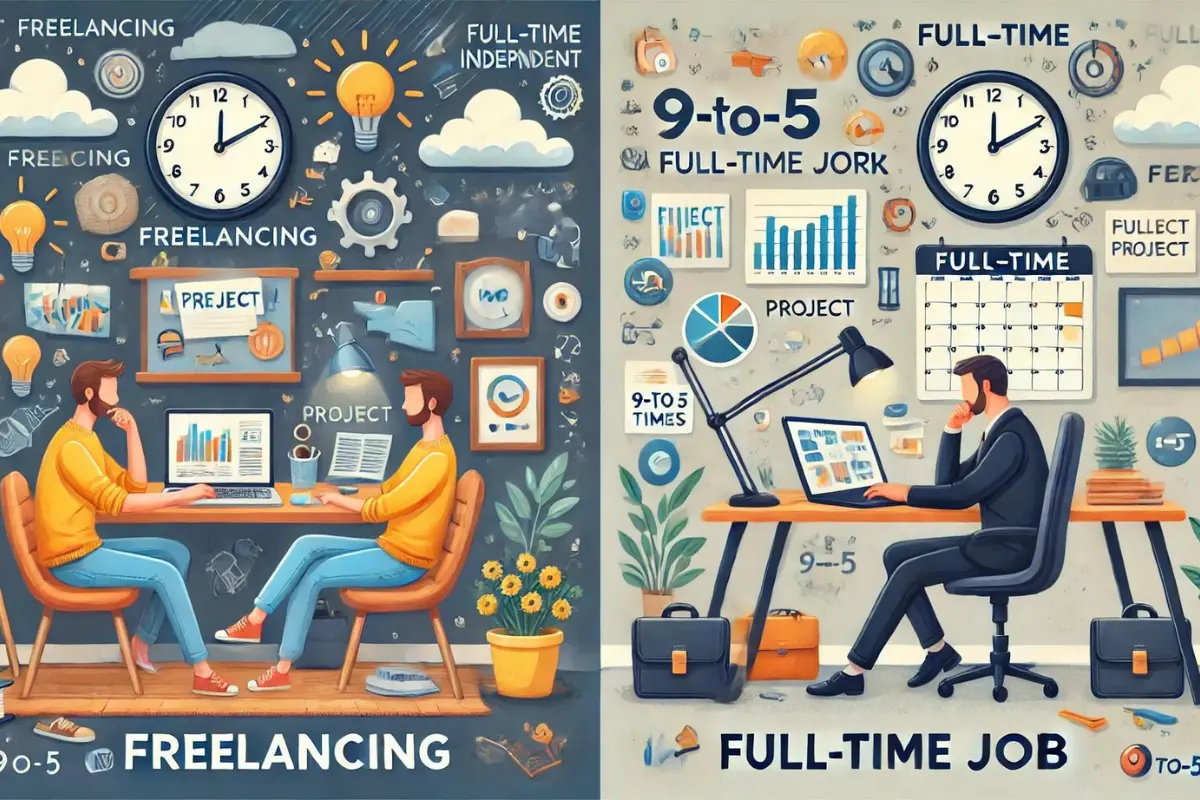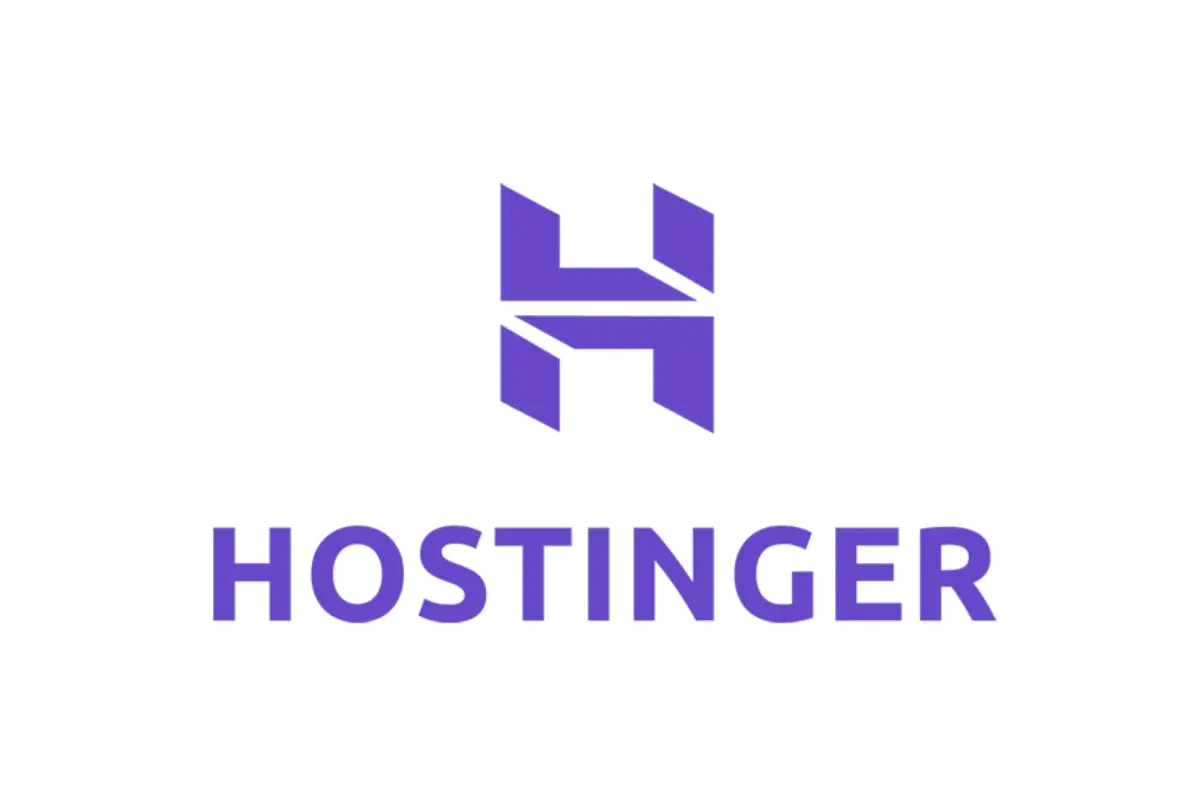Freelancing vs. Full-Time: Which Career Path is Right for You?

Choosing between freelancing and a full-time job can be a tough decision. Both have their pros and cons and the right choice depends on your personal situation, goals and preferences. This article will help you understand the differences between freelancing and full-time work and guide you in deciding which career path might be the best fit for you.
What is Freelancing?
Freelancing means working independently for different clients on various projects. You are not tied to one employer. Instead, you work for yourself and offer your services to multiple clients. Freelancers can work in a variety of fields, including writing, graphic design, digital marketing, programming and more.
Benefits of Freelancing
- Flexibility: Freelancing gives you the freedom to choose your working hours. You can work early in the morning or late at night. This flexibility can be great if you have other commitments, like family responsibilities or further education.
- Variety of Work: As a freelancer, you can take on different types of projects from various industries. This variety can keep your work interesting and help you develop a broad skill set.
- Control Over Workload: You can choose how much work you want to take on. If you need a break, you can slow down your workload. This control allows you to maintain a better work-life balance.
- Potential for Higher Earnings: Freelancers often charge by the hour or project. If you are skilled and have a good reputation, you can charge higher rates and potentially earn more than in a full-time job.
- Location Independence: Freelancing allows you to work from anywhere. Whether you prefer working from home, a café or while travelling, freelancing offers this freedom.
Challenges of Freelancing
- Income Instability: Unlike a full-time job, freelancing does not offer a fixed monthly salary. Your income can vary from month to month, depending on how many projects you secure.
- Lack of Benefits: Full-time jobs often come with benefits like health insurance, retirement plans and paid leave. As a freelancer, you need to manage these on your own, which can be costly.
- Finding Clients: One of the biggest challenges for freelancers is finding and retaining clients. You need to market yourself, network and continuously look for new opportunities.
- Isolation: Freelancing can be lonely, especially if you are working from home most of the time. You miss out on the social aspect of working in an office.
- Self-Discipline: Freelancing requires a lot of self-discipline. You need to manage your time well, meet deadlines and stay motivated without the structure of an office environment.
What is a Full-Time Job?
A full-time job typically means working for one employer for a set number of hours each week. In India, this is usually around 40-48 hours per week. Full-time employees have a fixed salary, and benefits and often work from an office.
Benefits of a Full-Time Job
- Stable Income: One of the biggest advantages of a full-time job is the stable and predictable income. You know exactly how much you will earn each month, which helps in financial planning.
- Employee Benefits: Full-time jobs often come with benefits like health insurance, paid leave, retirement plans and bonuses. These benefits provide financial security and peace of mind.
- Professional Growth: Many companies offer training, development programs and opportunities for career advancement. You can climb the corporate ladder and build a long-term career.
- Teamwork and Social Interaction: Working in an office allows you to interact with colleagues, build relationships and be part of a team. This social interaction can make work more enjoyable and less lonely.
- Work-Life Separation: With a full-time job, there is usually a clear separation between work and personal life. You have fixed working hours and once you leave the office, you can focus on your personal life.
Challenges of a Full-Time Job
- Less Flexibility: Full-time jobs typically have fixed working hours and you may need to commute to an office. This lack of flexibility can make it harder to manage other commitments.
- Limited Control Over Workload: In a full-time job, you often have little control over the projects you work on and the amount of work you have to do. This can lead to stress and burnout.
- Office Politics: Working in an office environment can sometimes involve dealing with office politics, which can be stressful and frustrating.
- Risk of Job Loss: Although full-time jobs offer stability, there is always the risk of layoffs or downsising, especially in uncertain economic times.
- Dependency on Employer: Your income and job security are tied to your employer. If the company faces financial difficulties or decides to downsize, you could lose your job.
Freelancing vs. Full-Time: A Comparison
Let’s compare freelancing and full-time jobs based on different factors to help you decide which might be better for you.
| Aspect | Freelancing | Full-Time Job |
| Income Stability | Variable income; fluctuates based on projects | Stable, predictable income |
| Flexibility | High flexibility; choose your own hours and projects | Limited flexibility; fixed working hours |
| Employee Benefits | No employee benefits; must manage your own | Employee benefits provided by employer |
| Work-Life Balance | Greater control but can blur lines between work and personal life | Clear separation; set working hours, weekends off |
| Career Growth | Self-driven; requires proactive skill development | Structured growth; opportunities for promotions |
| Job Security | Low job security; depends on finding consistent clients | Higher job security; consistent employment |
| Social Interaction | Can be isolating; mostly independent work | Team environment; regular social interaction |
| Location Independence | Can work from anywhere; no fixed location | Usually location-dependent; office-based |
| Risk | Higher risk; unstable income and client inconsistency | Lower risk; consistent salary and benefits |
| Client Management | Requires active client acquisition and management | Clients handled by company; less direct responsibility |
1. Income Stability
- Freelancing: Income can vary month to month. You may have months with high earnings and others with little or no income.
- Full-Time Job: Provides a stable and predictable income, which makes financial planning easier.
2. Flexibility
- Freelancing: Offers complete flexibility in choosing when and where to work. Ideal for those who value independence.
- Full-Time Job: Typically has fixed working hours and requires commuting to an office. Flexibility is limited.
3. Benefits
- Freelancing: No employee benefits like health insurance or retirement plans. You need to arrange these on your own.
- Full-Time Job: Often comes with benefits like health insurance, paid leave and retirement plans.
4. Work-Life Balance
- Freelancing: You can control your workload, which helps maintain a better work-life balance. However, managing multiple clients can be stressful.
- Full-Time Job: Fixed working hours allow for a clear separation between work and personal life, but demanding jobs can sometimes spill over into personal time.
5. Career Growth
- Freelancing: You are responsible for your own professional development. This can be an advantage if you like learning independently, but it requires discipline.
- Full-Time Job: Many companies provide training and development opportunities. There is also the potential for promotions and long-term career growth within the company.
6. Job Security
- Freelancing: No job security, as projects can end at any time. You need to continuously find new clients to maintain your income.
- Full-Time Job: Offers more job security with a steady income. However, no job is completely secure and layoffs can happen.
7. Social Interaction
- Freelancing: Can be isolating, as you work alone most of the time. You miss out on the social aspects of working in an office.
- Full-Time Job: Provides opportunities for teamwork, collaboration and building professional relationships.
8. Location Independence
- Freelancing: Allows you to work from anywhere. You can choose a location that suits your lifestyle.
- Full-Time Job: Usually requires you to work from a specific location, typically an office. Remote work options are becoming more common, but they are still limited.
Making the Right Choice for You
Now that you understand the differences between freelancing and full-time work, how do you decide which is right for you? Here are some factors to consider:
1. Your Personal Situation
If you have financial responsibilities like family or loans, a full-time job with a stable income might be a safer choice. If you are a student or have a partner with a stable income, freelancing might give you the flexibility you need.
2. Your Career Goals
If you want to climb the corporate ladder, gain management experience and enjoy the security of a regular paycheck, a full-time job might be the best option. If you value independence, want to work on diverse projects and enjoy the challenge of being your own boss, freelancing could be more fulfilling.
3. Your Personality
Are you self-disciplined, motivated and comfortable working alone? Freelancing might suit your personality. Do you thrive in a structured environment, enjoy teamwork and like having a clear career path? A full-time job might be a better fit.
4. Your Skills and Experience
If you have specialised skills that are in demand, freelancing can be very rewarding. You can charge higher rates and work on interesting projects. If you are just starting out in your career or want to develop a broad skill set, a full-time job can provide the training and mentorship you need.
5. Your Work-Life Balance
If work-life balance is important to you, freelancing offers the flexibility to control your workload and working hours. If you prefer clear boundaries between work and personal life, a full-time job with fixed hours might be better.
Freelancing vs. Full-Time: The Indian Context
In India, the job market is evolving rapidly. The rise of the gig economy and remote work opportunities has made freelancing a more viable option for many professionals. However, full-time jobs remain the traditional choice for most, offering stability and social security benefits that are highly valued in Indian society.
Freelancing in India
In India, sectors like IT, banking, healthcare and education are some of the largest employers offering full-time jobs. These jobs often come with clear career paths, opportunities for advancement and professional development programs. Companies like Tata Consultancy Services (TCS), Infosys, Wipro and HDFC Bank are known for their stable employment opportunities and extensive training programs.
Full-time jobs remain the more traditional and stable career path for many Indians. The appeal of a steady income, job security and benefits like health insurance and provident fund make full-time employment an attractive option.
Freelancing is gaining popularity in India, especially in fields like IT, writing, digital marketing and graphic design. Many Indian freelancers work with international clients, which can lead to higher earnings due to favourable exchange rates. The ability to work with global clients also broadens their exposure and allows them to work on diverse and innovative projects.
The Rise of Freelancing Platforms
Freelancing platforms like Upwork, Fiverr and Freelancer have made it easier for Indian professionals to connect with clients worldwide. These platforms offer a wide range of projects, from short-term gigs to long-term contracts. They also provide a level of security by ensuring that freelancers get paid for their work.
In addition, local platforms like FlexiJobs and Truelancer cater specifically to Indian freelancers, offering opportunities that are more tailored to the domestic market. These platforms are helping to create a more robust freelancing ecosystem in India.
The Middle Path: Hybrid Work Models
As the Indian job market evolves, hybrid work models are becoming more popular. These models combine the stability of full-time jobs with the flexibility of freelancing. For example, some companies offer part-time positions or allow employees to work remotely a few days a week.
Another emerging trend is the “gig economy,” where individuals work on short-term contracts or projects while still maintaining a full-time job. This allows them to explore freelancing opportunities without completely giving up the security of a full-time job.
Final Thoughts: Which Path is Right for You?
Ultimately, the choice between freelancing and full-time work depends on what you value most in your career. Whether you choose the flexibility of freelancing or the stability of a full-time job, both paths offer unique opportunities for growth and success. Take the time to evaluate your options, consider your priorities and choose the path that aligns with your goals and lifestyle.
Whichever path you choose, remember that it’s not a permanent decision. Many professionals switch between freelancing and full-time work throughout their careers, depending on their life stage and changing goals. The most important thing is to choose the path that feels right for you now and be open to evolving your career as you grow and learn.
Calling all Marketers!
🔴 Are you tired of searching for the perfect job?
Whether you're into content writing, SEO, social media, graphic design, or video editing—full-time, freelance, remote, or onsite—we've got your back!
👉 We post over 30 job opportunities every single day. Yes, every day (all verified).
Join the most reliable and fastest-growing community out there! ❤️
And guess what? It’s FREE 🤑
✅ Join our WhatsApp Group (Click Here) and Telegram Channel (Click Here) today for instant updates.







